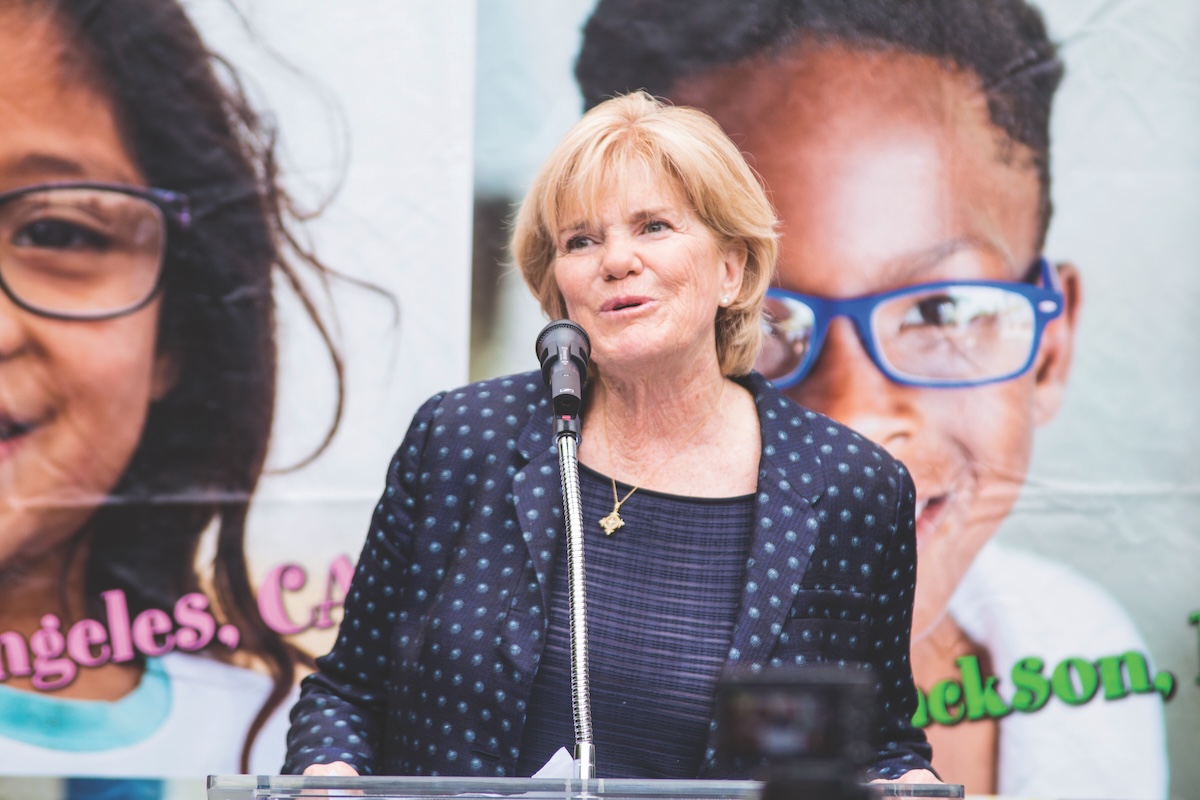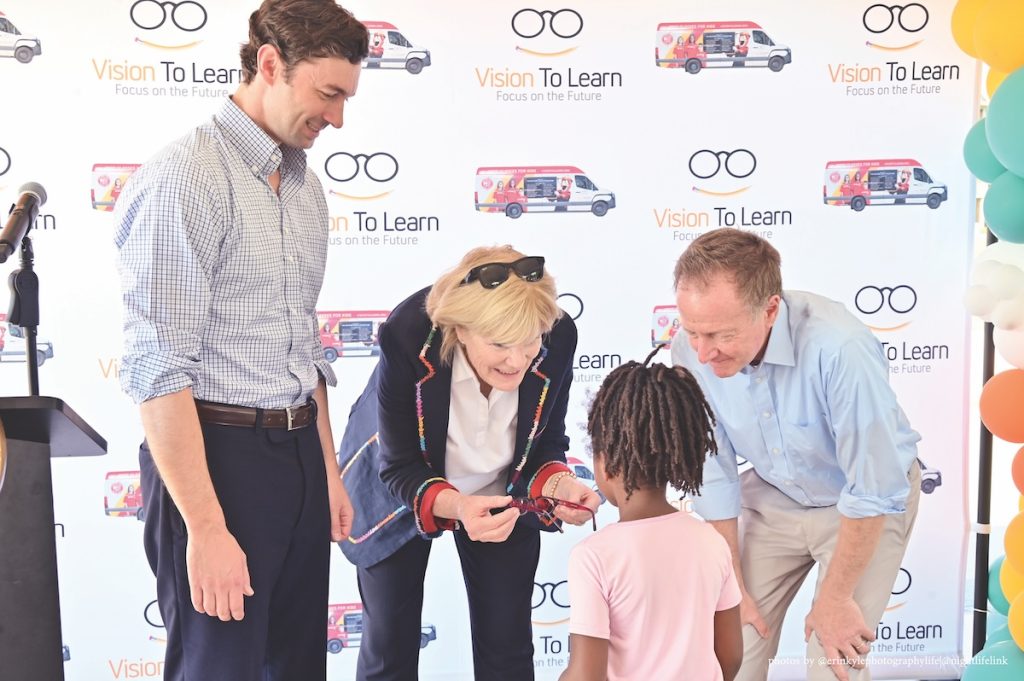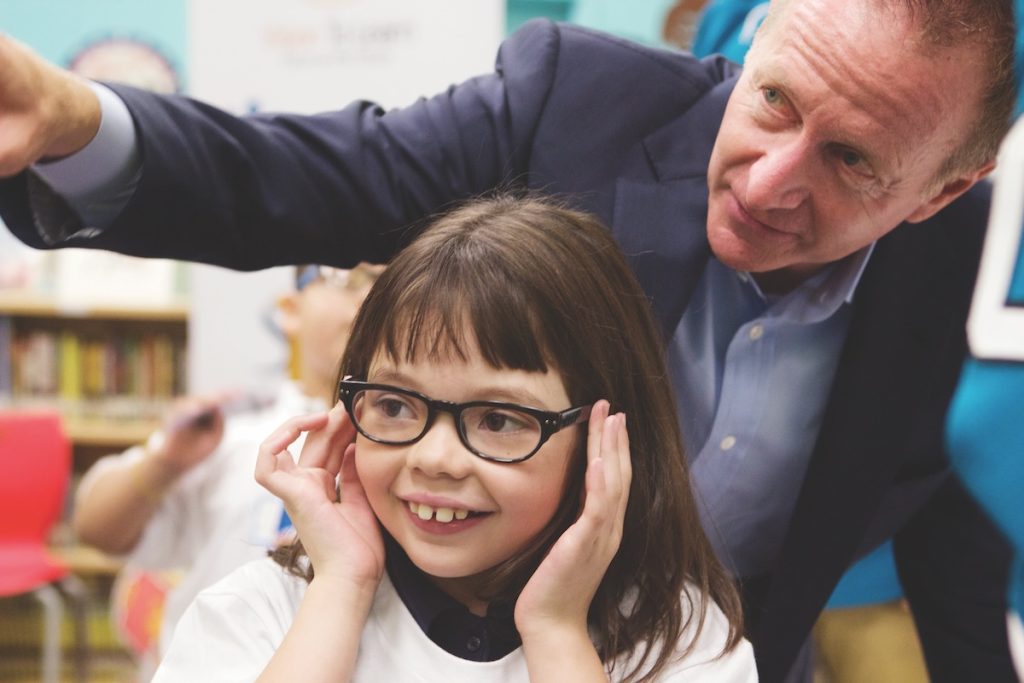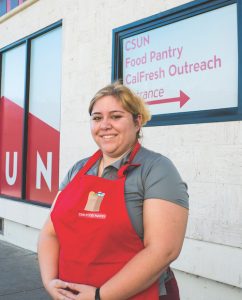Ann Hollister: Bringing Vision to Children

As a D.C. kid, born and raised in the political marinade of her hometown, Ann Hollister saw politics as the obvious path to public service. After years of ascending the political ranks from congressional staffer to Chief of Staff to a freshman Congressman to a veteran political consultant managing California statewide races, Hollister realized that her political experience was uniquely applicable to community service. And her pivot from politics to the nonprofit sector has allowed her to see, more directly, the profound impact a nonprofit is able to have on peoples’ lives.
As the president of Vision To Learn, a nonprofit organization, founded by Austin and Virginia Beutner, that provides vision screenings, free eye exams, and glasses to children in underserved communities, Hollister has helped scale the organization’s operations to 14 states plus Washington, D.C., making it one of the largest school-based health services operating today. That’s a big deal when you consider that if a child doesn’t read by the 3rd grade, they’re four times more likely to drop out of high school.
Under Hollister’s leadership, Vision To Learn is on the precipice of providing its 500,000th pair of glasses to children, significantly impacting their academic performance and overall well-being. In a sector where impact is often hard to measure, that’s a slam dunk. Working to remove barriers to healthcare access for underserved communities, particularly in education, Vision To Learn’s work to access Medicaid and CHIP reimbursement means the program is not only scalable but sustainable.
Q: Can you tell me about your journey that has brought you to where you are today, focusing on your community work at Vision To Learn?
Ann Hollister: My professional background prior to coming to Vision To Learn was in politics. I worked as a political staff person, whether on Capitol Hill, in Sacramento, or L.A. City Hall. I also ran many campaigns here in California. I always thought that was how you made a difference in the world – through politics.
After running a couple of losing campaigns, I realized that wasn’t the only option to make a difference. I’ve since realized that through politics, you acquire a very unique skill set that is applicable to a lot of community work. For almost the last 10 years, that’s what I’ve done with my political background – go into communities in need and try to address a small need, but do it well. We find ways to deliver services in high-need schools, providing glasses to kids who need them to succeed in school.

It’s a small slice of the pie, but I feel that we do it well day in and day out at schools in 14 states, and we have been able to scale. I don’t think I could have helped us get to that place if I hadn’t learned what I did in politics. The nonprofit sector is a place where you can make a real difference, and I feel that’s what Vision To Learn has done.
Q: What about your upbringing taught you about the importance of giving back to the community or making a difference?
A: Well, I’m a Washington, D.C. kid, born and raised, and politics is the business of D.C. So it’s not unusual for a kid who doesn’t know what they want to do to go into politics. That’s what I did, and I fell in love with my first job. I feel like I’ve never stopped loving what happens in politics and the difference it can make. It was definitely being a D.C. kid that influenced me.
Q: How do you feel about your transition from politics to the nonprofit world?
A: I feel great about the transition. Vision To Learn gives kids glasses, and we’ve given a lot of kids glasses – we’re going to give our 500,000th kid glasses this fall. I believe we’re the largest school-based health service of any kind operating today, certainly as a nonprofit.
A good thing came out of COVID, and that was community. In L.A., families got meals at schools thanks to our founder, Austin Beutner, they got tested, and they got vaccinations at school. I think school-based health services are on the rise, and we’re a model of how that can work. It removes barriers like having to take time off work or finding an optometrist who accepts Medi-Cal in underserved communities.
Q: Can you talk about the research regarding when a child needs to learn to read to have a good chance of succeeding?
A: If you’re not reading at grade level by third grade, you’re four times more likely to drop out of high school. Not a lot of good happens when that occurs. What we see every day is that “aha” moment when a kid gets their first pair of glasses. They all say the same thing: “I didn’t know the tree had leaves,” or “I didn’t know the world looked like this.” They didn’t know they couldn’t see.
Johns Hopkins University, our partner in our Baltimore program, did a three-year control group study of the Vision To Learn program. The study, published in the Journal of the American Medical Association Ophthalmology, found that giving kids glasses is the most impactful academic intervention there is. For kids in the bottom quartile, it’s equivalent to four to six months of additional learning time. It’s more impactful than everything but one-on-one tutoring.
Q: How does Vision To Learn’s funding break down between government grants and individual fundraising?
A: We’re about one-third public reimbursement or other public monies, and the balance is philanthropy. We’ve worked hard to crack the code as a nonprofit to get reimbursed for kids who are enrolled and eligible for Medicaid reimbursement. It’s not easy because the system was created for brick-and-mortar offices. We go to a school and help every kid, regardless of immigration status or insurance status, and then post-service, we try to get reimbursed for those we can find in the system.

Q: How was Vision To Learn founded?
A: Austin Beutner was deputy mayor at the time under Mayor Villaraigosa in Los Angeles. He was preparing to give a speech to a teachers’ group and asked some teacher friends about the biggest problems they faced. One of them told him that kids didn’t have the glasses they needed to be successful at school.
Austin, an investment banker by trade, did some research and found that this was indeed a significant issue. He bought an old bus and converted it into a two-lane optometric office. We went to a school in Northridge and helped five kids the first day. From there, it grew. Now we have 50 clinics, using Mercedes Sprinter vans with an optician and an optometrist. It looks just like the eye doctor’s office that you would go to inside our clinics.
Q: Can you talk about your work with professional athletes?
A: Look, I can work really hard and try to make glasses cool, but it’s not going to happen. However, if Justin Turner, when he was a Dodger, told a group of kids at an elementary school very near Dodger Stadium that he would never have been in the MLB if he had not gotten glasses in third grade, kids listen. The Clippers and Dodgers have been amazing supporters. Thanks to the Clippers’ incredible partnership we’ve been able to help every kid in Inglewood, Long Beach, LA Unified and now thousands more in L.A. County. Athletes have been on our clinics for years, and we’ve featured different athletes who’ve been supportive of the program.
Q: What are your biggest obstacles in connecting with donors?
A: I think the biggest obstacle is simply awareness. We don’t have an impressive social media following despite our best efforts. I think if people knew our story and heard the great stories from kids, they would be more inclined to donate. It usually takes about a minute before a donor’s head nods and they say, “Oh yeah, I get that. Kids, how can you succeed without glasses? Oh, how much does it cost? $150 per kid? Let me help.” So it’s a pretty easy pitch, but it’s hard to get the exposure that you need.
Q: Do you think there are more opportunities for public-private partnerships in serving communities of need?
A: I think that the safety net in a place like L.A. or the Bay Area is extensive, but the problem is that kids in the Inland Empire are just as needy, and there’s not the same philanthropy base. The fact that you can have a public-private partnership makes the philanthropy dollars go further. We love helping kids in L.A., but we want to help kids everywhere in the state, including the Central Valley where there’s not the same philanthropic base. That’s the conversation to be had – how to extend these services to areas without strong local philanthropic support.
Q: Is there anything else you’d like to add?
A: I think Austin and Virginia Beutner had a great idea, and that is if you help one kid today, it’s a good day. They saw a need and created a solution. Hopefully, after 12 years of doing this, we’re also bringing attention to the need. If a kid goes to school hungry, you give them breakfast and lunch. If a kid goes to school without a book, you give them textbooks. If a kid goes to school without glasses, they should get glasses at school because those are barriers to learning. I think they’ve drawn attention to a need that should be fulfilled in every school.
